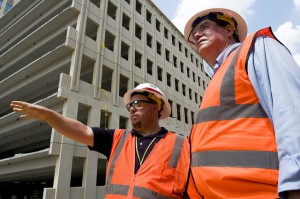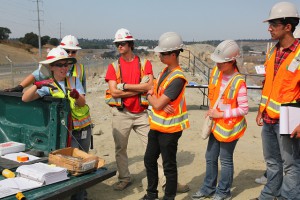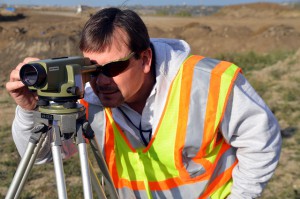Why Modern Land Surveying Techniques Focus On Flexibility and Scalability
 Modern land surveying projects tend to be very large and complex. This can lead to issues when new information arises and organizations have to change or expand their project quickly in order to compensate. However, it doesn’t have to be this way. With the help of the latest land surveying techniques, organizations can remove bottlenecks, gain the flexibility and scalability needed to adapt to changing conditions, and ensure a more timely, effective development project. This post explores why flexibility and scalability are two of the most important fundamentals of surveying.
Modern land surveying projects tend to be very large and complex. This can lead to issues when new information arises and organizations have to change or expand their project quickly in order to compensate. However, it doesn’t have to be this way. With the help of the latest land surveying techniques, organizations can remove bottlenecks, gain the flexibility and scalability needed to adapt to changing conditions, and ensure a more timely, effective development project. This post explores why flexibility and scalability are two of the most important fundamentals of surveying.
Encouraging Greater Flexibility
From a professional land surveying perspective, flexibility means the ability to change a project quickly to adapt to changing conditions with no loss in the quality of service. The main reason that ensuring flexibility is so difficult is that today’s development projects are frequently spread out over large geographical areas, and also tend to be very complex and multifaceted.
The size of a project is a challenge to flexibility because it makes it much more difficult for changing directives to get out to all the different employees who need to hear them, while having a complex and multifaceted project logically means that there are more changes to account for. As the complexity of a project increases, so too does the chance of delays.
One way that a professional land surveying company can help encourage greater flexibility is by providing organizations with access to a cloud-based project management platform to help oversee their project. These platforms provide a centralized location to post all information, instructions and deliverables related to a project.
They can also be accessed directly from mobile devices, meaning that reaching employees in the field is no longer an issue. Whether employees are located in a central office or spread out over a very wide area, they can still find out the instant anything changes in the project plan, just by logging in to the project management platform. In addition, since the project management platform serves as an archive of all project-related information and materials, project leaders will always have access to the paper trail of what’s been done in the past, making it easier to adapt project plans along the way.
Encouraging Greater Scalability
Scalability and flexibility are closely related fundamentals of land surveying; scalability refers specifically to the ability to increase the scope of a development project, rather than just changing the project plan. Land surveying scalability is extremely important in the modern landscape, as larger projects have become the norm. Organizations may plan ahead for a very large project, but there’s always the possibility that the project could exceed their expectations, requiring them to add on to the scope of the project quickly. Failure to exhibit scalability means that projects will take longer to finish, which in turn means that organizations won’t be able to start enjoying a return on their project as quickly as they might have hoped.
A cloud-based project management tool is also a key part of the solution when it comes to encouraging greater scalability. A bigger project requires more team members. Team members joining a project that is already in progress are bound to go through a period when they’re still learning their exact responsibilities, meaning that they won’t be able to contribute in the same manner that an experienced team member would. A cloud-based project management solution can help cut down the length of time of this training period by providing new team members easy access to project information and training materials, allowing them to get up to speed quickly.
To learn more about modern land surveying techniques and how professional land surveying services from Landpoint can help with your development project, contact us today.
Image Source: U.S. Army Corps of Engineers




